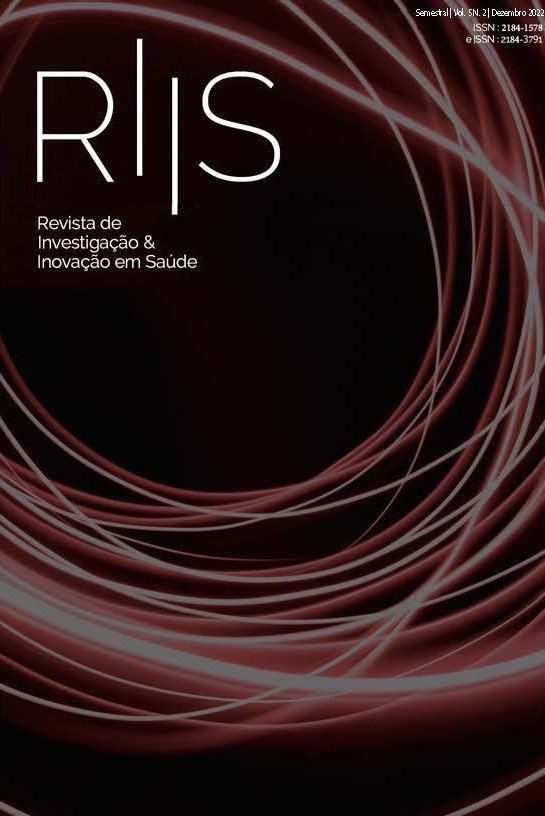Safety use of medication in critical care patients: integrative literature review
DOI:
https://doi.org/10.37914/riis.v5i2.205Keywords:
nursing, critical care, drug therapy, patient safetyAbstract
Background: the critically ill patient is particularly vulnerable to medication-related incidents, due to the high complexity of care. Aims: analyze the nursing interventions that promote medication safety in critical care patients. Methodology: integrative review on four data-bases, PubMed, EBSCO, Scielo and B-On. Nine articles were included. Results: medication safety is considered a major quality indicator in healthcare organizations. Implementing a safety culture is important, since it recognizes that highly risk interventions are performed and error is inevitable. The complexity of care in critically ill patients implies a vulnerable condition, where multiple medications are needed, which when associated with stress and poor nurse-patient ratio, can result in medication errors. The healthcare team should be aware of all stages of medication; therefore, communication is essencial in medication safety. Conclusion: the nursing team, as key-elements of care delivery in critically ill patients, have an important role in medication safety. Therefore, the process of preventing errors is a considerate challenge, requiring evaluation and monitoring thorough. The nursing team has to guarantee a safe efficient and focused care for the patient and family.
References
Barlow, A., Barlow, B., Tang, N., Shah, B. & King, A. (2020). Intravenous Fluid Management in Critical Ill Adults. Critical Care Nurse. 40(6), 17–27. DOI: https://doi.org/10.4037/ccn2020337
Despacho n.º 1400-A/2015 do Ministério da Saúde (2015). Diário da República nº28/2015, II série, nº28. https://files.dre.pt/2s/2015/02/028000001/0000200010.pdf
Despacho nº 5613/2015 do Ministério da Saúde (2015). Diário da República nº102/2015, II série, nº102. https://files.dre.pt/2s/2015/05/102000000/1355013553.pdf
DGS. Direção Geral da Saúde. (2015). Norma nº 014/2015 de 06/08/2015. https://www.dgs.pt/departamento-da-qualidade-na-saude/ficheiros-anexos/noc_meds-alerta-maximopdf-pdf.aspx.
DGS. Direção Geral da Saúde. (2011). Estrutura Concetual da Classificação Internacional sobre Segurança do Doente - Relatório Técnico. Disponível em https://www.dgs.pt/documentos-e-publicacoes/classificacao-internacional-sobre-seguranca-do-doente-png.aspx.
Farzi, S., Irajpour, A., Saghaei, M., & Ravaghi, H. (2017). Causes of medication errors in intensive care units from the perspective of healthcare professionals. Journal of Research in Pharmacy Practice, 6(3), 158-165. DOI: https://doi.org/10.4103/jrpp.JRPP_17_47
Flynn, F., Evanish, J.Q., Fernald, J.M., Hutchinson, D.E., & Lefaiver, C. (2016). Progressive care nurses improving patient safety by limiting interruptions during medication administration. Critical Care Nurse, 36 (4), 19–35. DOI: https://doi.org/10.4037/ccn2016498
Gracia, J., Sanz, Á., Serrano, R., & Garrido, J. (2020). Medication errors and risk areas in a critical care unit. Journal of Advanced Nursing. 00:1–10.
Hammes, J., Pfuetzenreiter, F., Silveira, F., Koenig, Á., & Westphal, G. (2008). Prevalência de potenciais interações medicamentosas droga-droga em unidades de terapia intensiva. Revista Brasileira de Terapia Intensiva, 20 (4), 349-354 DOI: https://doi.org/10.1590/S0103-507X2008000400006
Iglésias¬ Ferreira, P. (2013). Reconciliação da Medicação: Um conceito aplicado ao Hospital. Boletim Do CIM, ROF 106 (Jan/Mar2013).
JBI (2014). Joanna Briggs Institute Reviewers’ Manual: 2014 edition / Supplement. The Joanna Briggs Institute.
Johnson, M., Sanchez, P., Langdon, R., Manias, E., Levett-Jones, T., Weidemann, G., Aguilar, V., & Everett, B. (2017). The impact of interruptions on medication errors in hospitals: an observational study of nurses. Journal of Nursing Management, 25 (7), 498–507. DOI: https://doi.org/10.1111/jonm.12486
Karavasiliadou, S., & Athanasakis, E. (2014). An inside look into the factors contributing to medication errors in the clinical nursing practice. Health Science Journal, 8 (1), 32–44.
Millichamp, T., & Johnston, A.N.B. (2019). Interventions to support safe medication administration by emergency department nurses: An integrative review. International Emergency Nursing. 49, 100811. DOI: https://doi.org/10.1016/j.ienj.2019.100811
Melnyk, B., & Fineout-Overholt, E. (2011). Evidence-based Practice in Nursing & Healthcare: A Guide to Best Practice. Philadelphia: Lippincott Williams & Wilkins.
Moher, D., Liberati, A., Tetzlaff, J., & Altman, D. (2009). Preferred reporting items for systematic reviews and meta-analyses: the PRISMA statement. Open Medicine, 3(2), 123-130. DOI: https://doi.org/10.1371/journal.pmed.1000097
Moreira, M., Mesquita, M., Stipp, M. & Paes, G. (2017). Potential intravenous drug interactions in intensive care. Revista da Escola de Enfermagem da USP. 51:e03233. DOI: https://doi.org/10.1590/s1980-220x2016034803233
OMS (2021). Global Patient Safety Plan 2021-2030: Towards Eliminating Avoidable Harm in Health care. Disponível em https://cdn.who.int/media/docs/default-source/patient-safety/gpsap/global-patient-safety-action-plan-2021-2030_third-draft_january-2021_web.pdf?sfvrsn=6767dc05_15.
OMS (2019). Patient safety: global action on patient safety – report by Director General. Documento A72/26. Disponível em https://apps.who.int/iris/handle/10665/327526.
OMS (2017). Medication Without Harm - Global Patient Safety Challenge on Medication Safety. Disponível em https://www.who.int/initiatives/medication-without-harm.
Patrick, V. C. (2011). Enfermagem de urgência: uma visão história. In P. K. Howard & R. A. Steinmann (Eds). Sheehy enfermagem de urgência: Da teoria à prática (L. C. Leal, Trad.) (6ª ed.) (pp. 3-8). Lusociência.
Pop, M., & Finocchi, M. (2016). Medication Errors: A Case-Based Review. Advanced Critical Care, 27(1), 5–11. DOI: https://doi.org/10.4037/aacnacc2016172
PRISMA (2015). PRISMA – Transparent reporting of systematic reviews and meta-analyses. http://www.prisma-statement.org/.
Reason, J. (2000). Human error: Models and management. British Medical Journal, 320(7237), 768–770. DOI: https://doi.org/10.1136/bmj.320.7237.768
Rohde, E., & Domm, E. (2017). Nurses’ clinical reasoning practices that support safe medication administration: An integrative review of the literature. Journal of Clinical Nursing, 27(3-4), e402–e411. DOI: https://doi.org/10.1111/jocn.14077
Sessions, L., Nemeth, L., Catchpole, K., & Kelechi, T. (2019). Nurses’ perceptions of high-alert medication administration safety: A qualitative descriptive study. Journal of Advanced Nursing, 75(12), 3654–3667. DOI: https://doi.org/10.1111/jan.14173
Sheikh, A., Dhingra-Kumar, N., Kelley, E., Kieny, M. P., & Donaldson, L. J. (2017). The third global patient safety challenge: Tackling medication-related harm. Bulletin of the World Health Organization, 95(8), 546. DOI: https://doi.org/10.2471/BLT.17.198002
Downloads
Published
How to Cite
Issue
Section
License
Copyright (c) 2023 Inês Correia, Maria Lurdes Martins

This work is licensed under a Creative Commons Attribution 4.0 International License.















